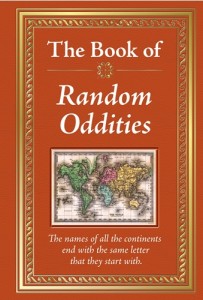A LASSI Assessment for Business Blogging
 Did you know that our ability to learn can be diagnosed?
Did you know that our ability to learn can be diagnosed?
The LASSI (Learning and Study Strategies Inventory) is an 80-item assessment based on the theory that success in learning relies on thoughts, behaviors, attitudes, and beliefs. What’s the purpose of the assessment? The LASSI, developed at the University of Texas, gives students feedback, so they can focus on improving their knowledge, attitudes, beliefs, and skills.
The aspect of LASSI that was so fascinating to me as a trainer in the field of business blogging was its three components: Skill, Will, and Self-regulation.
Skill
One key skill the LASSI looks for is information processing, including selecting main ideas.
As I think about that, before the reader ever sees our blog content, we writers need to have exercised skill in selecting the main idea we want to present.
A repeating theme in my corporate blogging training sessions is focus. Each blog post should emphasize one story, one idea, one aspect of the business or practice. If the writer has exercised that very key skill of selecting a main idea, it will be that much easier for the “student” (consumer of the blog material) to focus and get the point.
Will
This component of strategic learning has to do with attitude and motivation, with diligence and self-discipline.
In fact, in the early years of my company Say It For You, I talked about the “drill sergeant discipline” needed by blog content writers and about the fact that the main key to business blogging success was going to be simply keeping on task.
Self-regulation
An important part of the self-regulation component of strategic learning is time management. The LASSI scale measures how well student do in managing their time and maintaining concentration.
Couldn’t help recalling the Say It For You video I’d recorded about time management for blogs. Allowing 120 minutes total per blog post, I explained, I’d allocate 40 for research and “reading around”, learning others’ opinions on your topic and gathering information. 50 minutes should be used, I advised, for the actual writing and editing of the business blog, with 10 minutes for finding photos, charts, and clip art for illustrating your points, and 20 minutes for the actual posting on the site.
What might a LASSI assessment tell YOU about achieving greater business blogging success?

 Hara Estroff Marano
Hara Estroff Marano


Follow us online!